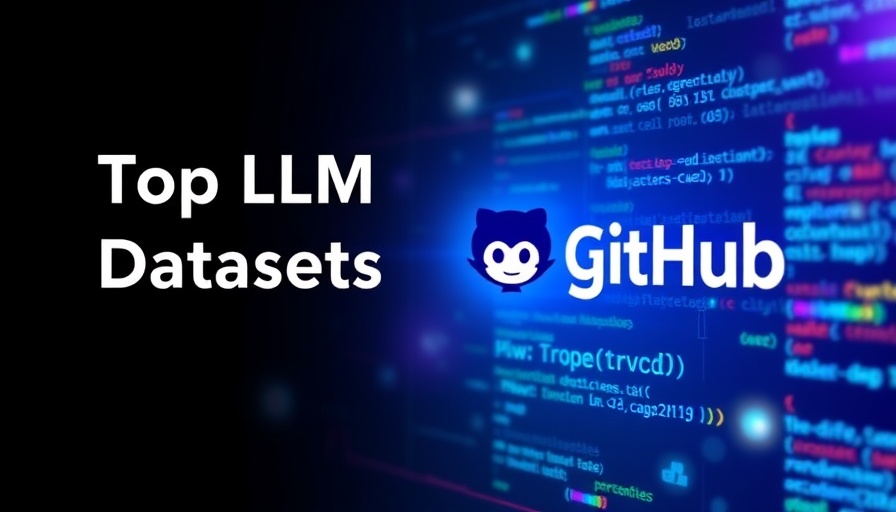
Understanding the Significance of LLM Datasets for Small and Medium Businesses
As the evolving landscape of artificial intelligence (AI) continues to shape our environment, it's imperative for small and medium-sized businesses (SMBs) to grasp how large language model (LLM) datasets can impact their operations. With the rise of powerful tools, such as GPT models, the right datasets can significantly boost innovation and facilitate the development of AI-driven services that resonate with consumer needs.
Why Data Quality Matters More than Ever?
In the realm of LLMs, the quality of data directly correlates with the effectiveness of AI models. For SMBs, utilizing datasets that prioritize accuracy, diversity, and complexity is vital. These elements ensure that AI solutions are not only reliable but also reflective of the diverse experiences and knowledge within their target markets.
The Three Exceptional Pillars of LLM Datasets
Accuracy: For any AI system, accuracy is paramount. Inaccuracies can lead to misinformed decisions that undermine customer trust. For businesses, maintaining a reputation for reliability can be achieved through utilizing datasets with high accuracy rates.
Diversity: A dataset that encompasses wide-ranging perspectives allows AI models to better mirror the diverse populations they serve. This is particularly significant for SMBs, as it enables them to tailor their offerings to cater to varied demographic segments.
Complexity: The modern consumer engages with sophisticated challenges that simplistic solutions often overlook. Datasets that reflect complex question-answer pairings enable AI to tackle multifaceted issues, offering businesses adaptive and innovative solutions.
Top LLM Datasets for Businesses
Diving into the GitHub repository for LLM datasets unlocks a treasure trove of resources that can empower businesses of all sizes. Let's explore the top LLM datasets ideal for different business categories:
General-Purpose Powerhouses
General-purpose datasets are versatile and applicable across various industries. They serve businesses looking to build a solid foundation for their AI initiatives by providing a broad spectrum of language structures and topics.
Mathematical Reasoning Datasets
For those in sectors that require analytical solutions, datasets focused on mathematical reasoning can lay the groundwork for building applications that solve intricate logic problems and assist in decision-making.
Code Generation Datasets
Especially beneficial for tech-oriented SMBs, these datasets support the development of AI systems capable of creating code, bridging the gap between AI and software development.
Real-World Conversation Data
Understanding human interaction is key for businesses that want to enhance customer relations. Utilizing datasets that capture real-world conversations allows companies to refine their communication strategies and engage more effectively with their audience.
Future Predictions: The Impact of LLMs on SMMS
As AI technology continues to advance, it's clear that LLMs will play an increasingly dominant role. Businesses that invest in the right datasets today will not only improve their operational efficiency but will also stay ahead of the competition. For SMBs, this means embedding AI into various facets of their strategy, from marketing to customer service, leading to a transformative effect on overall productivity and customer engagement.
Actionable Insights for Your Business
As you explore the implementation of LLMs, consider these actionable steps:
- Identify the specific areas where AI can add value within your organization.
- Research and select datasets from GitHub that align with your business needs.
- Experiment with these datasets in your AI models, adjusting and refining as you go.
- Track the impact of your AI initiatives on customer satisfaction and engagement.
- Stay informed about emerging trends in AI and data availability that can benefit your business.
By embracing the power of LLM datasets, small and medium-sized businesses can foster innovation, enhance their service offerings, and ultimately thrive in the dynamic market landscape. Don’t miss out; take advantage of these resources today!
 Add Row
Add Row  Add
Add 



Write A Comment